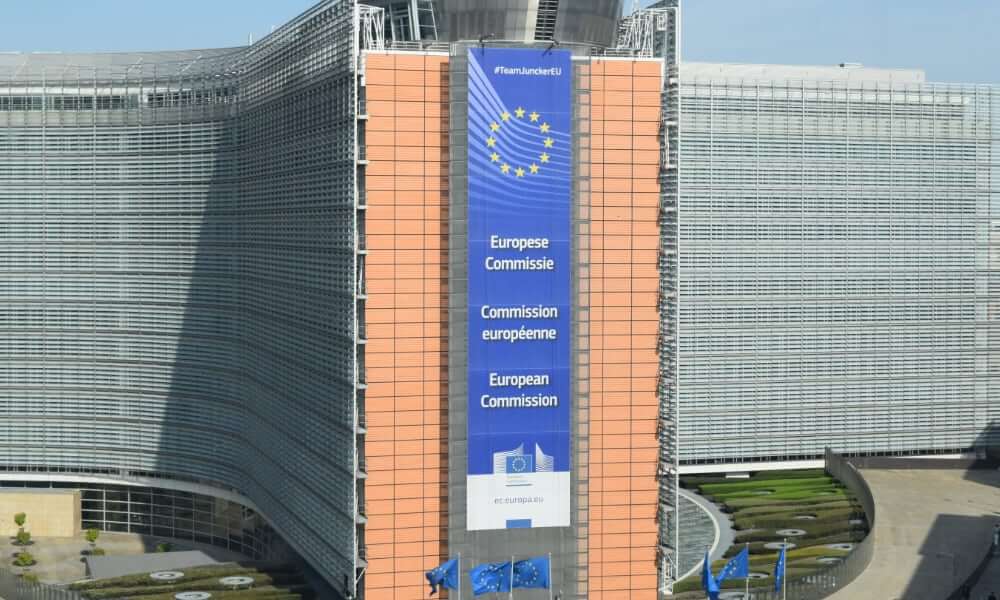A European D.C.
Comparing two political epicenters
M.A. in Political Science, European Union Policy Studies
Stepping off the metro, a cold breeze immediately enveloped me. Compared to the mild autumn temperatures of Florence, this change was oddly welcomed. The EUPS cohort, wrapped in scarves, grabbed our luggage and excitedly walked to the hotel. We were ready to settle in and prepare for the stimulating four days that were ahead of us in Brussels.
Brussels is home to the European Union institutions. The European Commission, European Parliament, the European Council and the Council of the European Union are all located in the appropriately named European Quarter. Each building is extremely distinct, but they all stand tall, gleaming with modernity and importance. Our cohort had the fortunate opportunity to visit all of these institutions and hear presentations from key government officials.
We started early every morning. Dr. D’Amato, the professor who accompanied our academic excursion, confidently led us to the metro. As we would wait for the train, I could not help but miss the frenzy of morning commuters. The metro was always crowded as elegant businessmen and women rushed in and out of the underground cars, wildly speaking into their phones. This sense of urgency was carried above grounds to the streets where people move swiftly between the various European Union buildings.
As we explored the European Quarter, I could not help but experience deja-vu. At first, it was difficult for me to place this feeling. After all, Brussels varies drastically from Florence. The side-walks are wider, cars rule the roads, buildings are updated and people seem more serious. I was stumped. Why was I comforted by the cold weather and the structured government center? After seeing the seamless flow of governmental buildings into a metropolitan shopping center, I finally placed it. Brussels is a European District of Columbia.
Despite being separated by six time zones and the Atlantic Ocean, the two cities share similarities. Both are epicenters of powerful governments. As a result, they embody an aura of importance and prestige. These government buildings are clustered together, dominating a section of the city. While these are vital parts to both cities, they do not take away from the authentic cultural charm that each cultivates.
Both cities are multicultural hubs. People from all over the world are attracted to these cities for education, work, and social opportunities. Strolling through the streets you can hear multiple languages being spoken simultaneously; even the street art has multilingual messages. This cultural diversity is celebrated in the cities as a sign of freedom and democracy. However, both cities retain a distinct sense of identity in one key element…food. Brussels is known for chocolate, waffles, and fries. Around the city, it is easy to spot see stores advertising for authentic Brussels cuisine. Personally, I believe this is where Brussels has an advantage (although some of my cohort members disagree). The friteries are unmatched compared to the delicacies of D.C.’s hot dog carts and pretzel stands.
When my cohort and I were not at the institutions, we took advantage of exploring the city. Brussels' busy streets were broken up with roundabouts and pockets of green spaces. This is parallel to the discrete tiny oases that are found in Washington. Both cities try to incorporate greenery into the urban concrete jungle. People of all ages zip around theses roundabouts and fly through the streets electric scooters. Similar brands, such as Lime, are available in both cities. Even the shopping areas are alike. Brussels’ Place de l’Agora resembles the charm of downtown Georgetown. Boutique stores compete with international brands as fashionable people pursue the stores.
While these two cities share many similarities, the main difference is the architecture of the dominant government buildings. The European Union institutions are unique and sleek, contrasting with the neoclassical design of America’s government buildings. The European Union’s modernity is related to the semi-recent development of the organization. The European Union traces its roots to the founding of the ECSC in 1952. The Berlaymont, which was the first fully “European” building in the European Quarter, was built in 1963. This contrasts quite markedly with Washington, DC, which became the national capital in 1790. The White House, which utilized the federal style, began construction in 1792.
It is easy for a city to be taken over by its government institutions, especially when the government institution is a key international player. However, Brussels and Washington D.C. maintains this professionalism while keeping its own charisma. I look forward to visiting and discovering more of Brussels when the EUPS visit the city again in the Spring semester of 2020.
Sara Rzegocki is part of the 2019-2020 EUPS cohort. She graduated from JMU in 2019 with a major in Public Policy and Administration and a minor in Economics.
